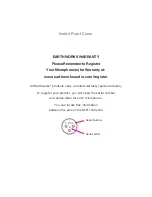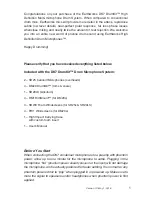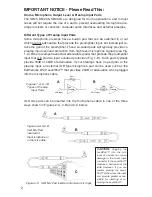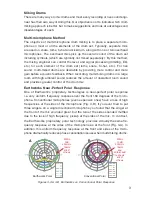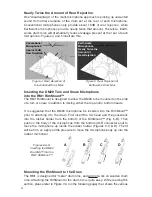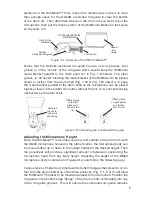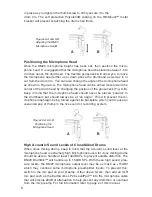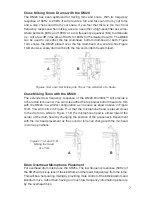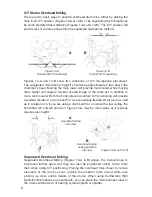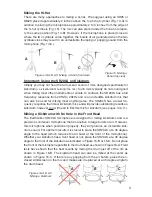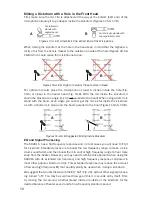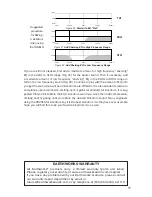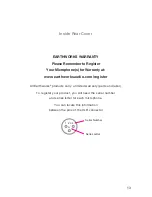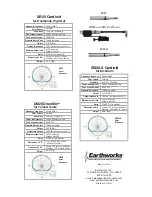
9
A
B
C
Figures 14-A, B & C Miking a Hi-hat (front view)
Figure 15 Miking a
Hi-hat (top view)
Important: Using the SR20LS on Kickdrum
Initially you may not hear the fat low-end sound of mics designed specifically for
kickdrum
(i.e. kickdrum EQ built into the mic)
. Such mics typically do not sound good
when miking most other instruments or vocals. In contrast, the SR20LS has a full
frequency response from 20HZ to 20kHz and is an incredible kickdrum mic that
can also be used for miking most anything else. The SR20LS has a lower fre-
quency response than most kickdrum mics and will provide outstanding results on
kickdrum, however you will need to EQ this mic for kickdrum
(see pages 10 & 11)
.
Miking the Hi-Hat
There are many approaches to miking a hi-hat. We suggest using an SR25 or
DM20 placed approximately 2 inches above the top hi-hat cymbal (Fig. 14-A) in
addition to placing the microphone approximately 2 to 3 inches from the edge of
the hi-hat cymbals (Fig. 15). The mic can also placed under the hi-hat in relative-
ly the same position (Fig. 14-B). However, if the microphone is placed close to
where the two cymbals come together, the bursts of air generated when the two
cymbals close may result in an undesirable thumping or popping sound from the
microphone (Fig. 14-C).
Miking a Kickdrum with No Hole in the Front Head
The Earthworks SR20LS microphone is designed for miking kickdrums and is a
precision condenser microphone that is sensitive to large bursts of air. However,
this microphone when positioned properly, they will produce an incredible kick-
drum sound. For optimum results it is crucial to place the SR20LS at a 45 degree
angle to the head (which reduces the air burst at the front of the microphone).
Whether your kickdrum has a front head or not, place the SR20LS at a 45 degree
angle to the front of the kickdrum as indicated in Figure 16-B or 16-C. Do not place
the front of the microphone parallel to the drum head as shown in Figure 16-A. Field
tests have shown that the best results by miking the drum just off of the rim as
shown in Figure 16-B. The kickdrum head can also be miked at the center as
shown in Figure 16-C. If there is any popping from the air bursts, place the en-
closed windscreen on the mic and make sure it is placed at a 45 degree angle to
the drum head.
Figures 16-A, B & C
Miking a Kickdrum
A
B
C


